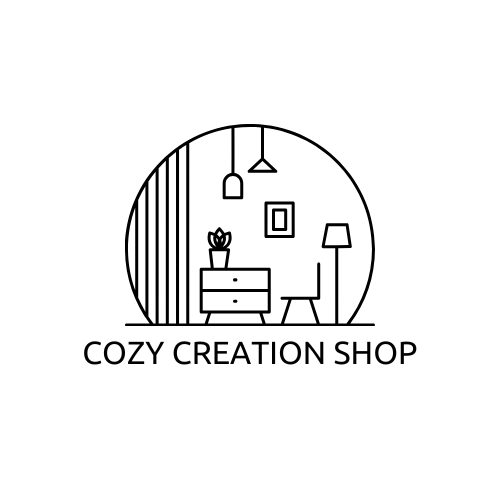
How to Start a Home Decor Dropshipping Business
Share
Starting a home decor dropshipping business can be an exciting and profitable venture for entrepreneurs with an eye for interior aesthetics and a passion for eCommerce. With the global home decor market projected to exceed $800 billion by 2028, this niche offers vast potential for anyone looking to tap into a stylish and ever-evolving industry. Whether you're new to online selling or an experienced store owner seeking a fresh niche, this guide will walk you through how to start a home decor dropshipping business, from ideation to launch and beyond.
Understanding Dropshipping and Why Home Decor Is a Profitable Niche
Before diving into the logistics, it’s important to understand how dropshipping works. Unlike traditional retail models, dropshipping allows you to sell products without holding inventory. When a customer places an order, it is forwarded to a supplier who ships the item directly to the buyer. This model eliminates upfront inventory costs and allows for greater flexibility, particularly in niche markets like home decor.
Home decor is especially suited to dropshipping for several reasons. First, there’s a constant demand for home improvement products, driven by social media, interior design trends, and lifestyle changes like remote work. Second, home decor items range from small accessories like vases and wall art to functional pieces such as lighting and rugs, allowing for broad product offerings. Lastly, these products often have higher perceived value, enabling healthier profit margins compared to other dropshipping niches.
Step 1: Choose a Home Decor Niche That Aligns With Your Brand
When learning how to start a home decor dropshipping business, the first decision you need to make is your niche. The home decor space is vast, so narrowing your focus will help you create a brand that resonates with a specific audience.
Some niche ideas include:
- Bohemian or rustic home decor
- Scandinavian minimalist aesthetics
- Eco-friendly or sustainable home products
- Luxury or designer-inspired decor
- Seasonal or holiday-themed decor
Choosing a niche helps you stand out in a crowded market and tailor your branding, marketing, and product selection accordingly. The more specific your niche, the easier it is to connect with a dedicated customer base.
Step 2: Research Market Trends and Validate Product Ideas
Once you’ve selected a niche, you need to validate it with market research. Use tools like Google Trends, Pinterest Trends, and Instagram hashtags to see what types of home decor products are trending. Explore platforms like Etsy, Wayfair, or Amazon to study customer reviews and analyze best-selling items.
The goal is to identify products that:
- Have consistent or growing demand
- Are lightweight and easy to ship
- Aren’t easily breakable
- Offer good margins
- Can be marketed with appealing visuals
Pay attention to emerging design trends, such as Japandi, Art Deco revival, or vintage-inspired pieces. Staying ahead of the curve will keep your product line fresh and relevant.
Step 3: Find Reliable Dropshipping Suppliers
No matter how beautiful your store or strong your marketing, the success of your home decor dropshipping business will depend heavily on your suppliers. When sourcing products, prioritize quality, shipping times, and customer service.
Some popular platforms to find home decor dropshipping suppliers include:
- AliExpress: Ideal for beginners, offering thousands of affordable items with ePacket shipping.
- Spocket: Focuses on US and EU-based suppliers with faster delivery.
- Modalyst: Offers a curated selection of high-quality, name-brand products.
- SaleHoo: Gives access to vetted suppliers and wholesale prices.
- Print-on-demand platforms: For custom wall art, pillows, and other decor with unique designs.
When evaluating suppliers, order samples to assess product quality and packaging. Keep an eye out for items that look good in photos but lack quality in real life. Consistent branding and quality control are crucial for building trust with customers.
Step 4: Set Up Your Online Store
Learning how to start a home decor dropshipping business wouldn’t be complete without addressing your storefront. Building an appealing and easy-to-navigate eCommerce store is key to attracting and converting visitors.
Start by choosing an eCommerce platform. Shopify is the most popular for dropshipping due to its user-friendly interface and seamless integration with apps like Oberlo, DSers, and Spocket. Alternatives like WooCommerce (WordPress-based) and BigCommerce are also viable options.
When building your store:
- Use a clean, design-focused theme that highlights your products
- Optimize for mobile, as many shoppers browse on their phones
- Create high-quality product descriptions with dimensions, materials, and lifestyle use cases
- Include professional-looking images and videos that show products in real homes
- Set clear shipping policies, return options, and FAQs
Invest time in crafting an About Us page that communicates your brand values, especially if you focus on eco-friendly or artisanal decor.
Step 5: Price Your Products Strategically
Pricing is an art and science, especially when you want to stay competitive without undercutting your profits. Consider your product cost, shipping fees, platform fees, and your desired profit margin. Home decor typically allows for a markup of 2x–3x, especially if the product has a unique design or high perceived value.
Use psychological pricing tactics—like pricing a product at $29.99 instead of $30—to make prices feel more affordable. You can also offer bundles or free shipping thresholds to increase average order value.
Don’t forget to account for marketing costs. Paid ads, influencer partnerships, and content creation can eat into your margins, so factor those into your pricing strategy.
Step 6: Build a Strong Brand Identity
In the home decor industry, aesthetics and branding matter just as much as the products you sell. Your brand should evoke a specific lifestyle or emotion that aligns with your target audience.
Think about:
- Your logo and color palette: Choose hues that reflect your niche (e.g., earthy tones for boho, neutrals for minimalism).
- Brand voice: Are you sophisticated, playful, modern, or cozy?
- Product packaging: Even if you’re dropshipping, some suppliers allow for branded packing slips or thank-you notes.
- Social media presence: Use platforms like Instagram, Pinterest, and TikTok to showcase your brand story and product uses.
Consistency across all customer touchpoints builds trust and makes your brand memorable.
Step 7: Market Your Home Decor Dropshipping Store
Once your store is live, it’s time to drive traffic. Marketing is where most dropshipping businesses either thrive or falter. The good news is, home decor is highly visual, which makes it ideal for platforms like Instagram and Pinterest.
Here are some proven marketing tactics:
- Influencer partnerships: Send free samples to micro-influencers for honest reviews and exposure.
- Pinterest SEO: Create keyword-optimized pins that link back to your product pages or blog.
- Email marketing: Build an email list with pop-up offers and send out newsletters, promotions, and product spotlights.
- Facebook and Instagram ads: Run targeted campaigns using high-quality lifestyle imagery.
- Content marketing: Start a blog on your website about decorating tips, style guides, and trend forecasts to drive organic traffic.
You don’t have to master every channel at once. Focus on 1–2 platforms where your audience spends time and grow from there.
Step 8: Monitor, Optimize, and Scale
The launch of your home decor dropshipping business is just the beginning. You’ll need to continually track performance, analyze customer feedback, and optimize your operations.
Key metrics to monitor include:
- Conversion rate
- Customer acquisition cost
- Average order value
- Customer lifetime value
- Return rates
- Website bounce rate
Use tools like Google Analytics, Shopify Reports, and Meta Ads Manager to make data-driven decisions. Test different product placements, price points, or ad creatives to improve performance.
Once your business gains traction, consider expanding your product line, targeting new regions, or working with more exclusive suppliers. You might also transition from dropshipping to holding inventory for better quality control and faster shipping.
Common Challenges (And How to Overcome Them)
While the dropshipping model reduces some barriers to entry, it comes with its own challenges:
- Long shipping times: Mitigate this by using local suppliers when possible or clearly communicating expected delivery times.
- Product quality inconsistencies: Order samples regularly and maintain strong relationships with reliable suppliers.
- High competition: Stand out with a unique niche, compelling brand, and exceptional customer service.
- Low profit margins: Upsell, bundle, and optimize marketing to increase average order value.
The key is to approach these hurdles proactively. Many successful dropshipping stores thrive because they solve these issues better than their competitors.
Final Thoughts: Is Home Decor Dropshipping Right for You?
If you're passionate about design, enjoy visual branding, and have a knack for eCommerce, learning how to start a home decor dropshipping business can be a game-changing endeavor. The startup costs are low, and the potential for creative expression is high. Best of all, with the right strategy, you can build a sustainable, scalable online business that helps people turn their houses into homes.
Whether you're just starting out or looking to diversify your income streams, this business model offers the flexibility and freedom many entrepreneurs crave. Take your time with research, stay consistent with branding, and always keep your customer experience front and center.
By following the steps in this guide, you're well on your way to launching a stylish, profitable online store in one of the most evergreen and expressive niches in eCommerce.
